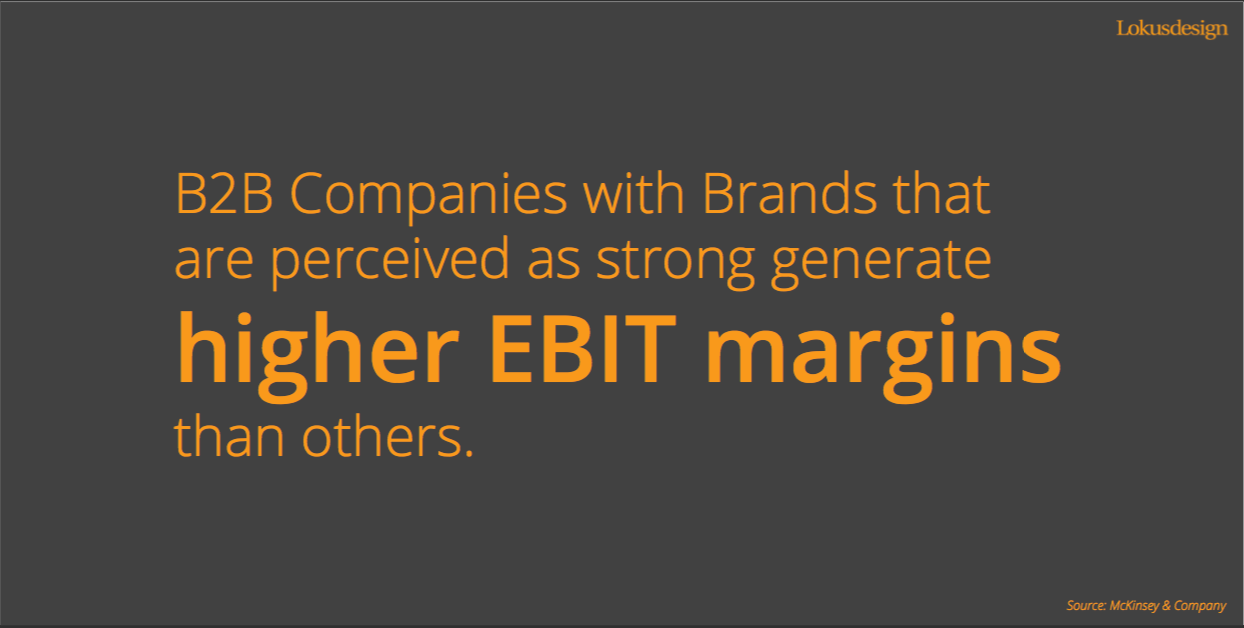What B2B companies should focus on in their branding efforts
In today’s age of globalization and a free market, the competition has become cutthroat for B2B companies as well. Incentives from the government, innovations in technology, and opportunity have given rise to numerous B2B companies who compete with each other on every point.
To stand out in this cluttered space, you will need a defined B2B-specific, branding strategy. Here’s how you can get started.
Focus on brand stories
The fastest-growing B2B businesses focus heavily on brand stories. If you look closely, you’ll see they are all propelled by a brand story that supports their business strategy. These brands, like Salesforce and XPO Logistics, have defined their business around the problems they solve and the benefits they provide to their customers, rather than the products and services they offer.
With B2C, we project a lifestyle associated with a product, with B2B, you must paint a picture wherein you showcase your customers achieving the goals they set out to, thanks to your offerings. Tell the story of how you helped customer xyz make an impact on their customers and offer a glimpse of what is possible for others just like xyz!
Speak about value
Focus your marketing efforts on problem-solving, because that’s essentially the value which will be added to the lives of your customers. Let them know what they have to gain from supporting your establishment. Showcase this via case studies, testimonials, and transformation stories.
Remember that the B2B customer is rarely a single person. Usually, the target customer includes a complex amalgam of different stakeholders. Show how you can add value to each of them. How you can make their specific job easier and how you can make them win at what they do.
Focus on experience
There’s no better teacher than experience, and the same applies to your marketing efforts. Instead of telling your customers what you can do for them, show them. Your branding strategy should focus on product demos, testimonials and anything that can help in experiencing the product or service provided.
It’s important to remember who you are talking to. This should reflect in what you say as well. In this context, the communication from the brand should be centered around what the target customer wants to know rather than what you want to say. Anticipate and answer their questions to strike the right note.
Focus on presentation
You may have the best content in the world, but it won’t matter if it isn’t presented properly. Make sure that your content is attractive, consumable, and easy to digest. Experiment with different formats to find what works best for you. From blogs to videos and webinars, create content which will strengthen your branding efforts.
Add an overriding thread of humanizing the brand
A classic mistake that B2B marketers make is to be boring. A common way to do this is to follow a robotic communication style. It’s important to remember that even though the customer of a B2B firm may be a business, the decision makers are human beings so it is important to focus on human values. Often these human values are larger than the products the B2B brand makes. An authentic communication of these values is always memorable and meaningful. This is why brands like Tata Steel are still remembered for “also making steel.”
So even though you need to be more focused on professional values, it helps to talk about the people behind the business. This will also aid in your talent acquisition strategy. After all, selling your brand to prospective employees is also an important sale to make.
Focus on consistency – a common voice across the brand
Consistency is key, especially when it comes to protecting your brand voice. At the philosophical level, this means staying true to who you are and what you fundamentally represent. If innovation is at your core, then make sure that comes out in all that you do and all that you say. If you are about great execution, then that should form the backbone of your communication strategy to be visible. This is not to deny the possibility of evolution. But for that evolution to be authentic it must be organic. For instance, Google earlier used to say, “Don’t be evil”. With time, that evolved to, “Do the right thing”, which essentially means the same thing.
At the practical level, ensure that all of the company marketing materials are uniform. The best way to do this is to place all of them, from business cards to name holders, on a conference table. Examine them carefully and look for inconsistencies such as a difference in font or inconsistency in brand colours.
In conclusion, let’s look at the biggest players in the B2B business such as IBM and Cisco. Despite being multi-billion-dollar companies with huge workforces, they still make work hard to stay constantly in the eye-line of the consumer. They are very careful with their brand communications and are usually miles ahead in the recruiting wars. It’s this emphasis on B2B branding that could become the difference between such a colossal success or simply being an also-ran.
Looking to develop a strong B2B branding strategy? Write to us on info@lokusdesign.com

